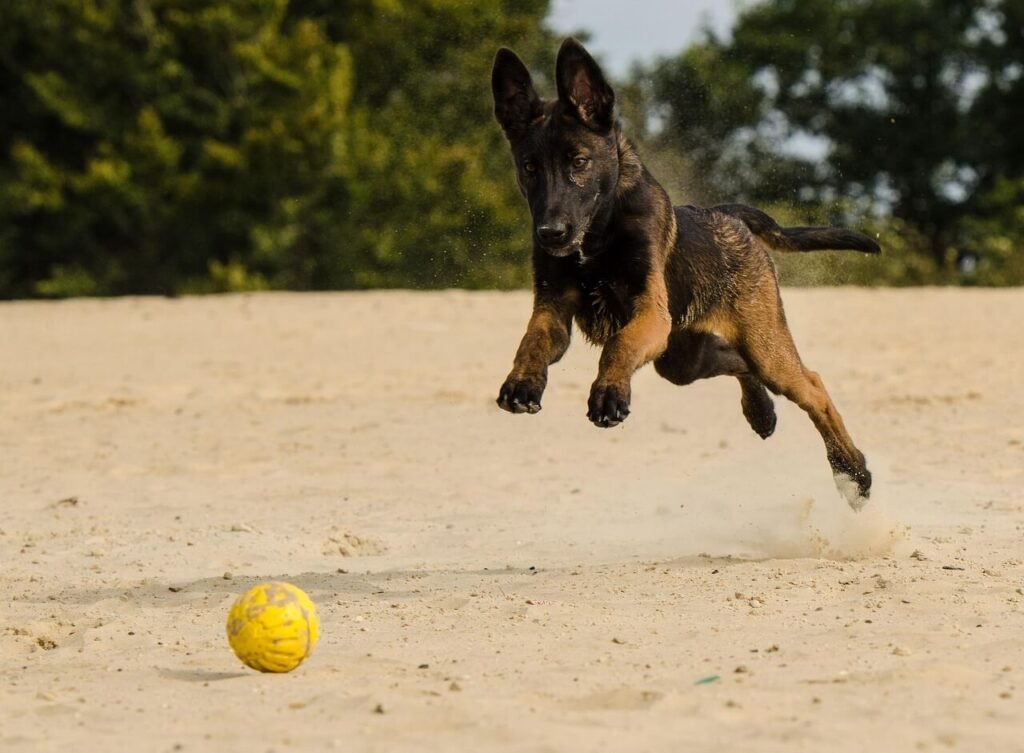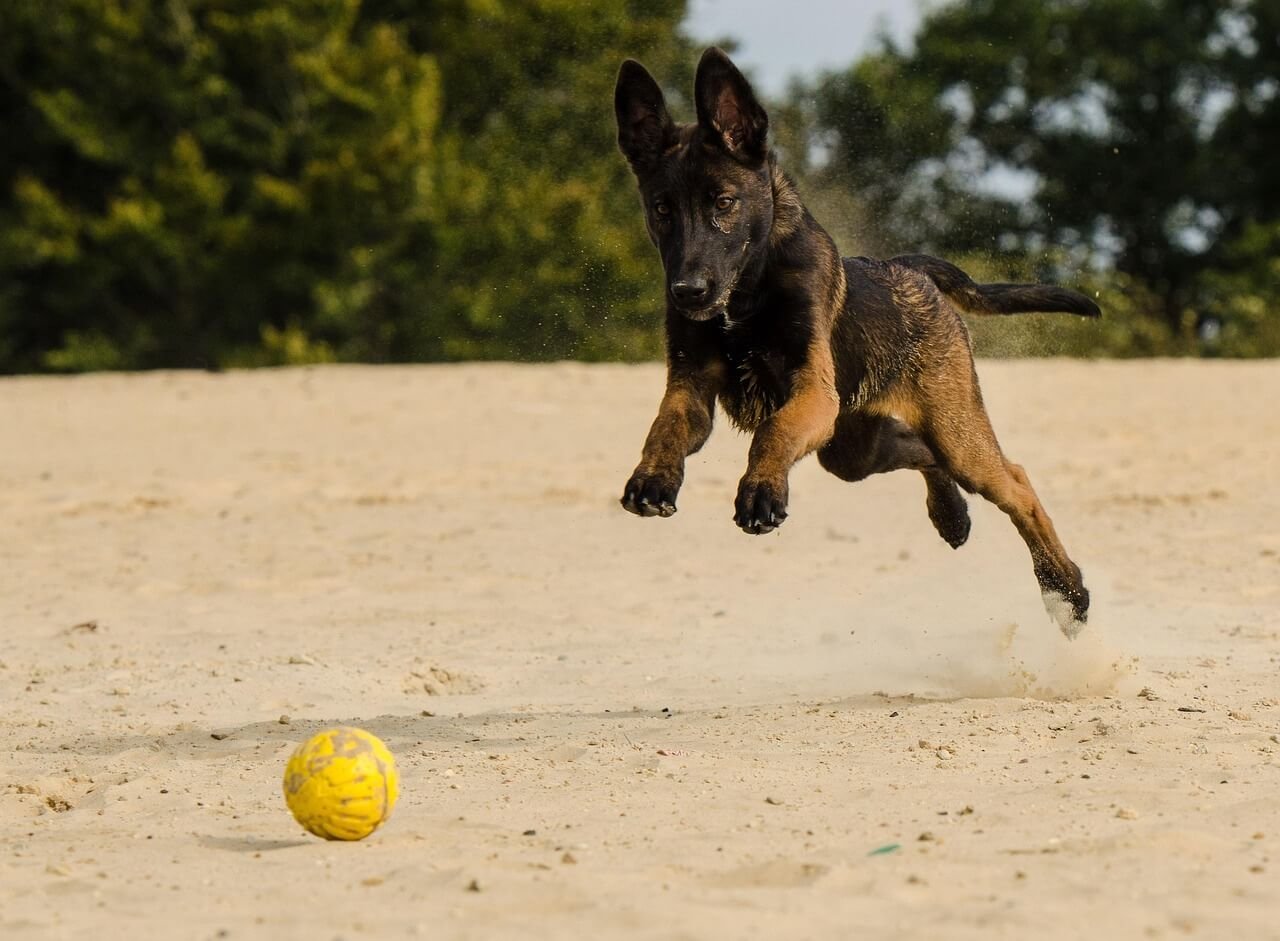Can Dogs Get Poison Ivy? What Every Pet Owner Should Know
As dog owners, we often marvel at our furry companions’ ability to explore the great outdoors without a care in the world. Whether they’re bounding through fields, sniffing bushes, or rolling in the grass, dogs have an uncanny knack for getting into everything. But what happens when their adventurous spirit leads them into contact with poison ivy? You’ve probably heard about the itchy, uncomfortable rash that poison ivy causes in humans, but can dogs get poison ivy too? The short answer is yes—though their experience with it may differ from ours. In this blog post, we’ll delve into how poison ivy affects dogs, how to identify it, and what you can do to protect your four-legged friend.
How Poison Ivy Affects Dogs: What You Need to Know
While dogs are less likely to suffer from poison ivy than humans due to their protective fur, they are not completely immune to its effects. Poison ivy contains urushiol, an oily resin that triggers allergic reactions in those who come into contact with it. Here’s how it can impact your dog:
Dogs with shorter fur or exposed skin (like their belly or paws) are more vulnerable to urushiol exposure.
The oil can stick to their fur and later transfer to human skin, causing indirect reactions.
Some dogs may develop redness, itching, or irritation on areas of exposed skin.
In rare cases, excessive licking or chewing of affected areas can lead to secondary infections.
Certain breeds with sensitive skin may exhibit more pronounced symptoms than others.
Understanding how poison ivy interacts with your dog’s body is crucial for early detection and treatment. While most dogs won’t experience severe reactions, vigilance is key to ensuring their comfort and well-being.
Identifying Poison Ivy: Protecting Your Dog Before It Strikes
Prevention is always better than cure, especially when it comes to poison ivy. Knowing how to identify this pesky plant can help you steer clear of it during walks or outdoor playtime. Here are some tips for recognizing poison ivy and keeping your dog safe:
Look for clusters of three glossy leaves, which is the hallmark feature of poison ivy plants.
Be cautious of vines or shrubs growing along trails, as these are common hiding spots for poison ivy.
Avoid areas with dense underbrush where poison ivy might thrive unnoticed.
Keep your dog on a leash in unfamiliar environments to prevent them from wandering into risky zones.
Educate yourself about local flora so you can spot potential hazards before they become a problem.
By familiarizing yourself with poison ivy’s appearance and taking preventive measures, you can minimize the risk of exposure for both you and your dog. A little preparation goes a long way in safeguarding your pet’s health.
Check this guide 👉Can Dogs Get Mosquito Bites? Best 7 Health Tips!
Check this guide 👉Can Dogs Get Hemorrhoids? Best 7 Health Tips!
Check this guide 👉Can Cats Get Parvo from Dogs? Best 7 Health Tips!

Signs Your Dog May Have Contacted Poison Ivy | Steps to Take if Exposure Occurs |
|---|---|
Red, irritated patches on exposed skin | Bathe your dog with lukewarm water and mild soap |
Excessive licking or chewing of specific areas | Wear gloves while cleaning to avoid transferring oils |
Swelling or inflammation around the paws | Use a vet-recommended topical treatment for relief |
Behavioral changes like increased scratching | Monitor for signs of infection or worsening symptoms |
Unusual odor or oily residue on their fur | Consult a veterinarian if symptoms persist |
Treating Poison Ivy Exposure in Dogs: Step-by-Step Guidance
If you suspect your dog has come into contact with poison ivy, prompt action can alleviate discomfort and prevent complications. Follow these steps to address the situation effectively:
Rinse your dog thoroughly with lukewarm water and a gentle, pet-safe shampoo to remove urushiol oil from their fur and skin.
Pay special attention to areas with less fur, such as their belly, ears, and paws, where exposure is more likely.
Dry your dog completely after bathing to prevent moisture-related issues like hot spots or infections.
Apply a veterinarian-approved anti-itch cream or ointment to soothe irritated areas, if necessary.
Prevent your dog from licking or chewing the affected area by using an Elizabethan collar (cone) if needed.
Timely intervention can make a significant difference in your dog’s recovery process. Always consult your veterinarian if symptoms worsen or persist.
Preventing Future Poison Ivy Encounters: Long-Term Strategies
Once your dog has had an unpleasant brush with poison ivy, you’ll want to take steps to ensure it doesn’t happen again. Prevention is the best way to keep your pup safe and happy during outdoor adventures. Here’s how you can minimize future risks:
Regularly inspect your yard or garden for poison ivy plants and remove them safely.
Train your dog to respond to commands like “leave it” or “stay” to avoid dangerous encounters.
Dress your dog in protective clothing, such as lightweight booties or shirts, during hikes in high-risk areas.
After outdoor activities, wipe down your dog’s paws and fur with a damp cloth to remove any potential irritants.
Keep your dog’s vaccinations and flea/tick treatments up-to-date to maintain overall skin health.
With these proactive measures in place, you can enjoy worry-free time outdoors with your furry companion. Prevention ensures peace of mind for both you and your dog.
Why Some Dogs Are More Prone to Poison Ivy Reactions
Not all dogs react the same way to poison ivy, and their individual skin sensitivity plays a significant role in how they respond to exposure. Factors like breed, coat type, and overall health can influence their susceptibility. Here are some key considerations:
Breeds with thin or short coats, such as Greyhounds or Boxers, are more likely to develop skin irritation from poison ivy.
Dogs with pre-existing skin conditions like allergies or dermatitis may experience heightened reactions to urushiol oil.
Puppies and senior dogs often have weaker immune systems, making them more vulnerable to irritants.
Overweight dogs may struggle to groom hard-to-reach areas, increasing the risk of prolonged exposure to poison ivy oils.
Environmental factors, such as humidity or frequent outdoor activity, can exacerbate the effects of poison ivy on sensitive skin.
Understanding these variables can help you take extra precautions for dogs that are more prone to skin issues. Tailoring your approach to your dog’s unique needs ensures their safety and comfort.
Soothing Your Dog’s Skin Naturally After Poison Ivy Exposure
If your dog experiences mild irritation from poison ivy, natural remedies can provide relief without resorting to harsh chemicals. These gentle solutions are safe and effective for most dogs, but always consult your vet before trying something new. Here are some options to consider:
Aloe vera gel (ensure it’s pure and free of additives) can soothe irritated skin and reduce inflammation.
Oatmeal baths are a time-tested remedy for calming itchy or inflamed skin.
Coconut oil applied topically can moisturize dry patches and promote healing.
Chamomile tea compresses can help reduce redness and provide a cooling sensation.
Baking soda paste mixed with water can alleviate itching and draw out toxins.
While natural remedies can be highly effective, they should complement—not replace—professional veterinary advice. Always monitor your dog’s condition to ensure the irritation doesn’t worsen.
How Nutrition Can Support Your Dog’s Skin Health
A balanced diet plays a crucial role in maintaining your dog’s skin health and resilience against irritants like poison ivy. Proper nutrition strengthens their skin barrier, reducing the likelihood of adverse reactions. Here are some dietary tips to boost your dog’s skin health:
Incorporate omega-3 fatty acids from sources like fish oil or flaxseed to reduce inflammation and improve skin elasticity.
Ensure your dog’s diet includes adequate protein to support tissue repair and overall skin health.
Add antioxidant-rich foods like blueberries or spinach to combat free radicals and promote healing.
Avoid processed foods or artificial additives that may trigger sensitivities or weaken the immune system.
Provide plenty of fresh water to keep your dog hydrated and flush out toxins naturally.
A nutrient-rich diet not only supports your dog’s skin but also enhances their overall well-being. By prioritizing nutrition, you’re equipping your dog with the tools they need to stay healthy and resilient.
Frequently Asked Questions About Dogs and Poison Ivy
Can dogs spread poison ivy to humans?
Yes, the urushiol oil from poison ivy can stick to your dog’s fur and transfer to your skin, potentially causing a reaction.
Do all dogs react to poison ivy?
No, not all dogs will show symptoms, but those with sensitive skin or less fur are more likely to experience irritation.
Is poison ivy dangerous for dogs?
While generally not life-threatening, poison ivy can cause discomfort and, in rare cases, lead to secondary infections.
What should I do if my dog eats poison ivy?
Eating poison ivy is unlikely to harm your dog, but monitor them closely for gastrointestinal upset and consult your vet if needed.
Can I use over-the-counter creams on my dog’s skin?
Only use products specifically formulated for pets, as human medications can be harmful to dogs.
Staying Vigilant: Keeping Your Dog Safe from Poison Ivy
While poison ivy isn’t a common issue for most dogs, it’s still important to be aware of its potential impact. By learning how to identify poison ivy, taking preventive measures, and knowing how to respond if exposure occurs, you can keep your dog safe and comfortable during outdoor adventures. Remember, your dog relies on you to protect them from hidden dangers in their environment. With a little knowledge and preparation, you can ensure that every walk in the park or hike in the woods remains a joyful experience for both of you. Together, you’ll navigate the great outdoors with confidence and care!
Why Is My Cats Second Eyelid Showing? Best 7 Expert Tips! Understand causes, health signs, and how to respond when your cat’s third eyelid becomes visible.
How Do I Know If My Cat Died Peacefully? Best 7 Expert Tips! Discover the quiet signs of a peaceful feline passing and find comfort in their final moments.
Cat Allergy Eyes: Best 7 Expert Tips! Discover why your eyes react to cats and learn proven strategies for relief—without giving up your feline friend.
Why Do Abyssinian Cat Colors Matter? Best 7 Expert Tips! Discover the genetics, rare hues, and care secrets behind Abyssinian coat colors for a healthier, happier cat.





